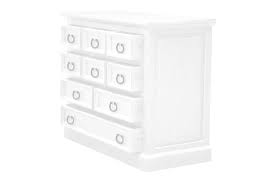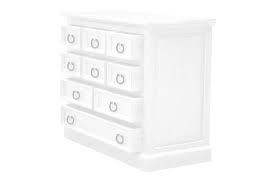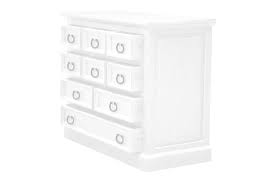The average time maybe 6 to 8 months, sometimes a year. Braces, which consist of brackets and wires, work by gently applying pressure to the teeth, and that pressure causes them to move into the correct position.

greatideas Clear braces, Braces teeth colors, Braces colors
Rubber bands are used for a similar purpose, which is to assist in the movement of jaw and teeth.

What does rubber bands do for braces. In short, not wearing rubber bands with braces may not cause any major issue, but you shouldn’t do it frequently. Rubber bands attach to small hooks on the braces and are taken on and off by the patient. The elastics allow for the jaw and bite alignment to occur and are the patient’s responsibility as.
For example, damon braces and invisalign use different technology and do. A common element of orthodontic treatment for many people is the rubber bands, also called elastics. First you have rubber bands called ligatures that are wrapped around each individual bracket to hold the archwire in place.
These bands are the ligature bands to hold the post in place. Moreover, the pressure is also provided to the bone that holds the tooth. The rubber bands should be changed out for new ones about three times a day (or after every meal) so that they may hold enough elasticity for the movement needed.
Rubber bands or elastics are used during orthodontic treatment to help move the teeth and align the bite of the upper and lower teeth. But what do rubber bands do for braces? Rubber bands do the work of pulling the jaw forward or backwards in order to line up your teeth correctly so they fit together when you bite down.
While braces are sometimes used without elastics, many people require the addition of these rubber bands to adjust the pressure on the braces. Learn about the types and how they're used. Braces can provide you with a brand new, stunning smile that will last a lifetime.
It may take the same duration as braces if you wear a rubber band with invisalign. As a result, a chemical reaction occurs inside the structure of the bone. So, try to wear the elastics regularly and maintain it according to the instructions to accelerate the orthodontic treatment.
We use rubber bands for almost every patient who receives traditional metal braces, as they provide the necessary connective forces needed to move your jaws and teeth into proper alignment. The importance of rubber bands one of the biggest mistakes braces patients make is not wearing their rubber bands as they should, either because they feel it is uncomfortable to do so or simply not important. Orthodontic rubber bands, also known as elastics, are small elastic bands that hook onto your braces from the top teeth down to the bottom teeth.
You see, in order to adjust imperfections in your bite, an orthodontist may adjust the rubber bands at each appointment. Why do i need rubber bands with my braces? Elastics or rubber bands are an important part of the orthodontic treatment for malocclusion.
Rubber bands are the elastic made components for braces that are used to put extra force move to the tooth for orthodontic tooth movement. In some cases elastics, or rubber bands, are used to apply additional pressure needed to move your teeth. What does rubber bands for braces do?
Understand why rubber bands are sometimes necessary. Not all braces will have these, nor do many of them have the interarch elastics. They stay in place all of the time and are only removed by your orthodontist when he or she adjusts your braces at your appointment.
Orthodontic rubber bands, or elastics, are one of the most common tools orthodontists use to straighten your teeth. That is because they provide the force necessary to move the teeth and jaw into proper alignment. Indications are the same as braces users.
Because of the force, you feel pressure on your teeth. They are used during the bite alignment stage of your braces treatment to apply enough tension to the teeth to move them in. While the bands that are placed between the brackets help to keep the wires in place, your inter arch rubber bands help to realign your.
First, the brackets — square metal pieces bonded directly to your teeth. Your orthodontist should instruct you on how often to change out your rubber bands and how exactly they should be put on. The discomfort should only last for two or three days.
Rubber bands, called elastics, are used with braces to apply additional force to certain areas of your mouth. Typically, all traditional metal braces do have the rubber bands. A rubber band puts a force on the tooth.
At all about braces, we are thrilled to help our patients achieve the smile of their dreams. Braces themselves adjust the alignment of teeth to straighten them out. With rubber bands, one can enhance or slow down the growth of.
Rubber bands come in different lengths and colors, and they place forces on the teeth and jaws. In our last orthodontic article, we discussed answers to some common questions about orthodontics and in this article, we are going to focus on questions about rubber bands. Rubber bands work with your braces by adding an additional level of pressure that helps to move your teeth and jaws.
The purpose is to provide extra force for your teeth to move so that proper alignment between the teeth of both arches is achieved. There are several parts to braces. Everyone who wears braces have these rubber bands, but some may need an additional type of rubber band.
Unless otherwise directed, wear your elastics 24 hours a day. Rubber bands may be a bit uncomfortable at first, because they are pulling your teeth into alignment. During the course of orthodontic treatment, a patient with braces may have to wear elastic rubber bands to help with the correction of their malocclusion.
The rubber bands have two roles when it comes to orthodontic treatment. Also called elastics, elastic braces bands are essentially rubber bands attached to brackets between upper and lower or front and back teeth. Invisalign users may need rubber bands.
Why do rubber bands on braces hurt so much? This will stop the progress of treatment and it will delay the removal of braces.

What are do it yourself braces? It seems there is no end

Elastics are used to apply additional pressure needed to

Elastics (Rubber Bands) help correct the bite. (With

Blue power chain on traditional metal braces Metal

Pin by J T on Braces (With images) Orthodontics, Dental

Tips and Advice for Anyone with Braces FrandsendDental

colored_braces_bands_different_braces_colors.jpg (2800×

How Do Elastics (Rubber Bands) Help My Smile? Elastic

La Boisson Qui Détruit La Mauvaise Graisse Couleurs

Rubber Band holder for braces Braces tips, Teeth braces

WHAT ARE ORTHODONTIC ELASTICS (RUBBER BANDS) AND HOW DO

How I carry my rubber bands for my braces pinterest

teeth follow SIM0NESLAYSS for more in 2020 Cute braces

Rainbow braces that is what I will do if I ever get braces







